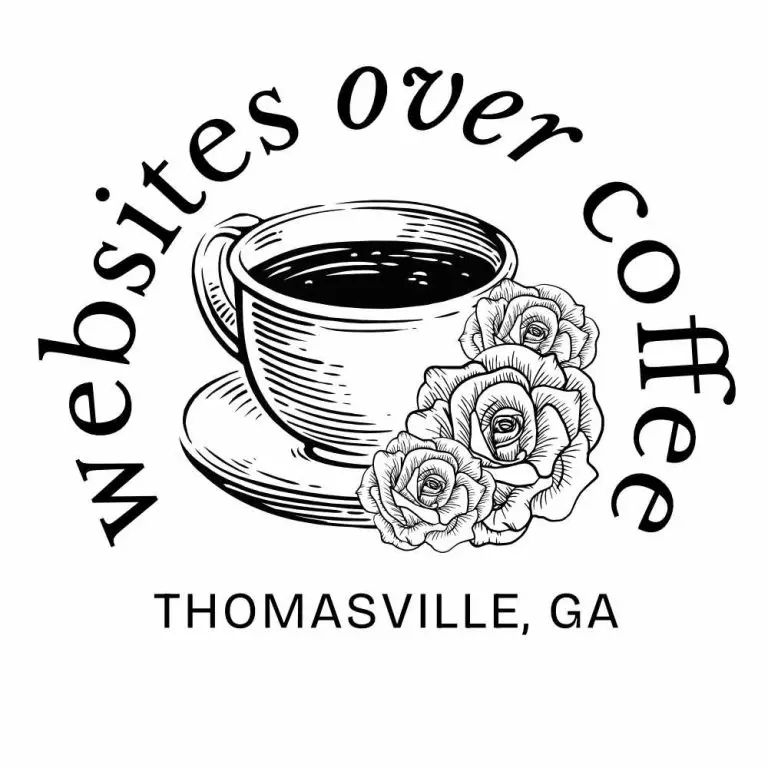Your content might be brilliant, but if people can’t read it comfortably, they’ll leave before discovering how amazing you are.
Imagine if someone finds your website through a Google search, excited to learn more about your services. They land on your homepage, try to read your compelling copy, but find themselves squinting at light gray text on a white background. After 30 seconds of eye strain, they give up and click away. They’re not leaving because they weren’t interested, but because reading your content felt like work.
This scenario happens thousands of times every day on websites with poor color contrast. Entrepreneurs spend hours crafting the perfect message, only to present it in color combinations that make reading difficult or impossible for many visitors.
The irony? The fix is usually simple, but the impact is enormous.
When your text is easy to read, people stay longer, read more, and are more likely to take action. When it’s not, you lose them before they even know what you offer.
Why Readable Color Combinations Matter More Than Ever
People have zero patience for websites that make them work harder than necessary. Here’s what poor color contrast is actually costing you:
Immediate Bounce Rates: When text is hard to read, people leave within seconds. You don’t even get a chance to make your case. Poor color contrast makes your bounce rate higher.
Accessibility Exclusion: Nearly 1 in 4 adults has some form of vision difficulty. Poor color contrast doesn’t just inconvenience them. Bad color contrast excludes them entirely.
Mobile Reading Challenges: Text that’s borderline readable on your computer monitor becomes impossible to read on a phone screen in bright sunlight.
Professional Credibility Loss: Hard-to-read text suggests you don’t pay attention to user experience, which is a red flag for potential clients evaluating your professionalism.
SEO Penalties: Search engines consider user experience signals, including how long people stay on your site. If they leave immediately because they can’t read your content, it hurts your rankings.
Lost Conversions: Even if people stick around despite poor readability, eye strain puts them in a negative mood, which is not exactly the mindset for making purchasing decisions.
What “Good Color Contrast” Actually Means
Color contrast isn’t just about dark text on light backgrounds (though that’s usually safest). It’s about the difference in lightness between your text color and background color, measured by something called a “contrast ratio.”
Here’s what the numbers mean:
- 4.5:1 or higher: Good color contrast for normal text
- 3:1 or higher: Acceptable for large text (18pt+ or 14pt+ bold)
- 7:1 or higher: Enhanced color contrast that’s easier for everyone to read
You don’t need to memorize these numbers, but you do need to test your color combinations to ensure they meet these standards.
How to Test Your Color Contrast
Don’t guess whether your colors are readable – test them. Here are the tools I recommend:
WebAIM Contrast Checker
The gold standard. Enter your text and background colors to get instant feedback.
Colour Contrast Analyser
A free tool that tests contrast and simulates various vision conditions.
Real-World Testing
The Squint Test: If you have to squint to read your text, so will your visitors.
The Phone Test: Check your website on your phone in various lighting conditions (bright sunlight, dim rooms, etc.)
The Distance Test: Can you read your text from 3 feet away? If not, the contrast might be too low.
The Senior Test: Ask someone over 50 to read your text. Age-related vision changes make poor contrast more obvious.
Quick Fixes for Better Readability
You don’t need to redesign your entire website to improve readability. Here are high-impact changes you can make immediately:
Darken Your Body Text
If you’re using light gray (#999999 or lighter), switch to dark gray (#333333) or black (#000000) for body text.
Lighten Your Backgrounds
Pure white (#FFFFFF) provides the best contrast for dark text. Off-white (#F8F8F8) is also excellent and feels slightly softer.
Add Background Overlays
For text over images, add a semi-transparent black or white overlay (50-80% opacity) behind the text.
Increase Font Weight
Sometimes bold text is more readable than regular weight, especially for headings over images.
Test Your Links
Make sure your link colors provide adequate contrast and are easily distinguishable from regular text.
The Mobile Readability Challenge
Mobile devices present unique readability challenges:
Screen Brightness Varies: Your text needs to be readable in bright sunlight and dim environments.
Screen Sizes Differ: Text that’s readable on a large phone might be impossible on a smaller one.
Touch Targets: Links and buttons need enough contrast to be clearly tappable.
Battery Saver Modes: Many phones automatically adjust screen brightness, potentially reducing contrast.
Always Test on Real Devices: Simulators don’t accurately represent real-world mobile reading conditions.
Color Combinations That Always Work
When in doubt, these combinations provide excellent readability:
For Body Text
- Black text on white background (
#000000on#FFFFFF) - Dark gray text on white background (
#333333on#FFFFFF) - Black text on light gray background (
#000000on#F8F8F8)
For Headings
- Your brand color on white (if it provides sufficient contrast)
- Dark navy on white (
#1A365Don#FFFFFF) - Dark green on white (
#22543Don#FFFFFF)
For Reverse Text (Light Text on Dark Backgrounds)
- White text on dark gray (
#FFFFFFon#2D3748) - White text on navy (
#FFFFFFon#1A365D) - Light gray text on black (
#E2E8F0on#000000)
The Accessibility Imperative
Good color contrast isn’t just about user experience.
It’s about inclusion, and it could be a legal matter depending on where you live. The Americans with Disabilities Act (ADA) and Web Content Accessibility Guidelines (WCAG) establish minimum color contrast requirements for websites.
If people can’t read your content comfortably, it doesn’t matter how brilliant your message is. But when your text is clear and easy to read, you remove one more barrier between your ideal clients and the help you provide.
That’s not just good design – it’s good service.

